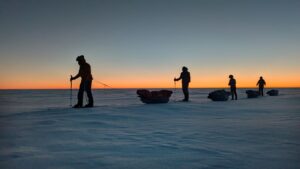A historical society has announced a public fundraiser in an attempt to save the childhood home of Dr. John Rae, one of the luminaries of arctic exploration.
The Hall of Clestrain is a three-story, mid-Georgian villa nestled on Mainland, Orkney Island, Scotland. Rae was born there in 1813 and later spent a productive life exploring Northern Canada, including an expedition that discovered the final piece of the Northwest Passage.
He was involved in the search for the lost Franklin Expedition and was noteworthy for his adoption of native practices during his many journeys. It was his connection with Indigenous people that allowed him to learn that at least some of Franklin’s men had ultimately resorted to cannibalism.

Dr. John Rae. Photo: Wikimedia Commons
Leaky and crumbling
Rae’s birthplace is no longer capable of keeping out the elements, according to the John Rae Society. Every storm that blows over Orkney causes the building to deteriorate further. So, on December 16, the Society will launch a 1.6-million pound ($2,300,000) fundraising effort to rebuild the slate roof, replace interior structural supports, and repair the exterior walls. The project will also create a new access road.

The plans for the restoration of the Hall of Clestrain. Photo: The John Rae Society
The project is estimated to cost 2.2 million pounds, but just under half of the funds will come from various public institutions, like Historic Environment Scotland, which has allocated £500,000 toward the cause. The remaining funds will be gathered via a public fundraising effort dubbed Save the Hall of Clestrain.
“The works will re-establish the Hall as a visible landmark and will make it ready for the next stage -– to faithfully restore it as the fine Georgian building it was in its 18th-19th-century heyday,” Cheryl Chapman, chair of the John Rae Society, told The Scotsman.
There is only a small window of opportunity to save this nationally significant building from the elements, she added.





